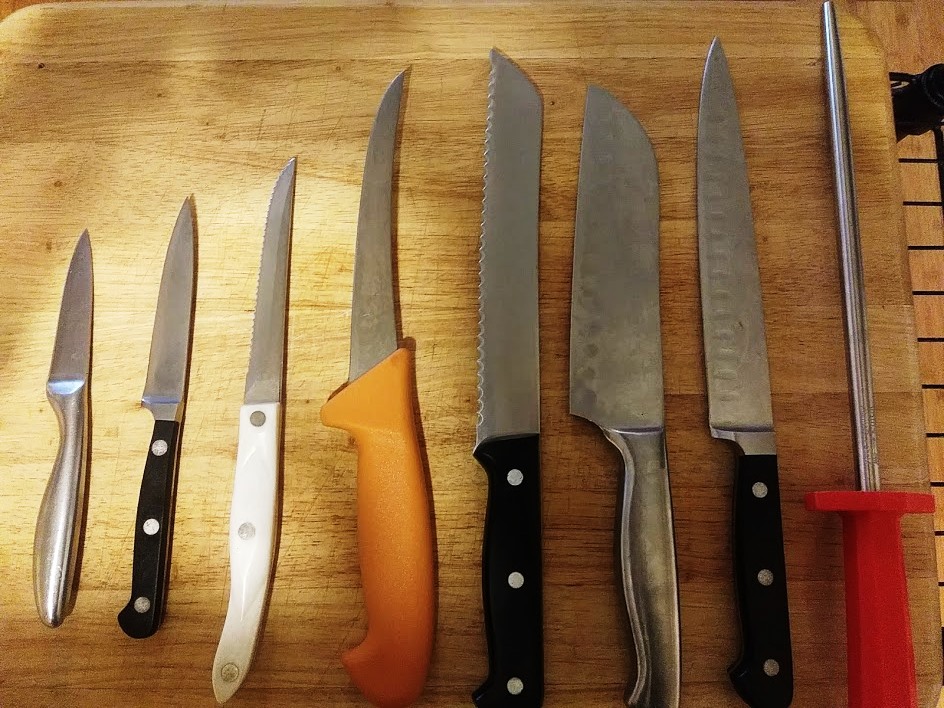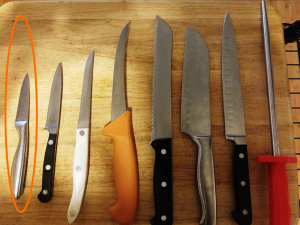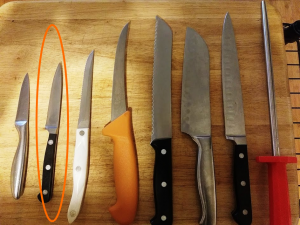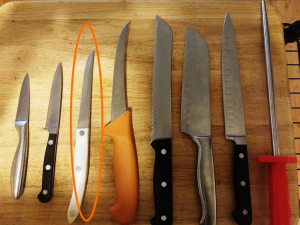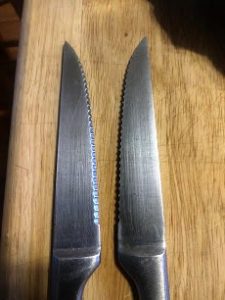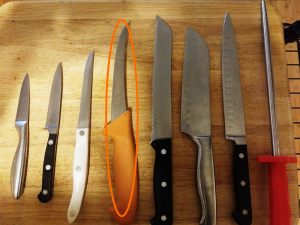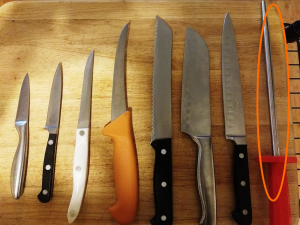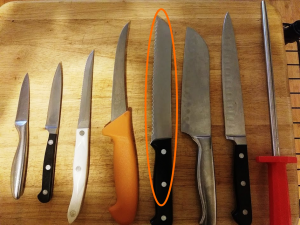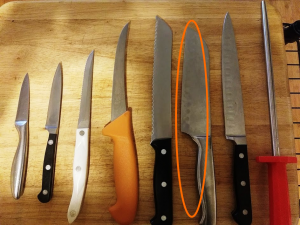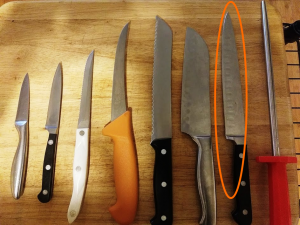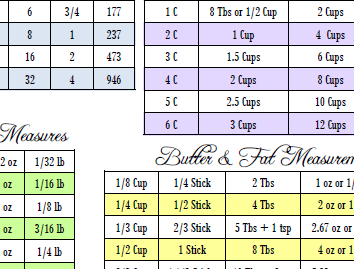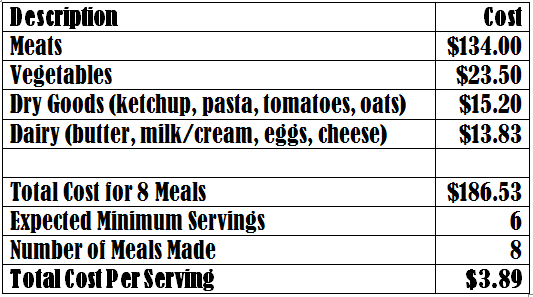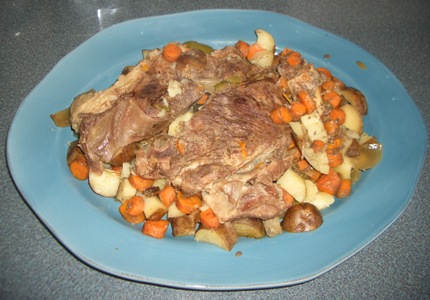Jerica here, with some geek confessions for you. I love math. Did you know I almost went for a degree in mathematics? I wanted to be a code buster or something, I guess. Now I spend my days trying to crack the code on taking care of a whole farm, a very ambitious hubby, and five cute little crazy people.
All that to say… I really like running numbers for things. Looking at it from this way and that. You should see my Christmas lists—they’re on a spreadsheet organized by year and recipient, haha!
I know. So nerdy. I’ve been this way all my life.
Now that I’m a momma and house-chef-extraordinaire (but not according to my kids, who would remind you every time you mention “momma’s cooking” about that ONE incident with the stale banana chips hidden away in some oatmeal…), I love running numbers on cost of food. It’s fun to predict how much we will eat and then to actually look at it afterward, and hypothesize about any unusual influences.
Like yesterday—I made tacos with homemade corn tortillas. I wanted a double-batch so I could skip cooking later this week (it’s a doozy with Tyler and Shreveport deliveries coming up!). But I had served a not-so-kid-friendly lunch of beef tips with mushrooms and gravy on rice. I thought it was delicious, but they sat and poked around in their bowls for a looong time. Whatev.
Anyway, they were HUNGRY at dinner. And they happen to LOVE tacos (who doesn’t?). So all the small ones pigged out. And maybe the big ones, too. It WAS pretty yummy, after all. 😉
I often see cute little blogs about healthy lunches, and in the photos they show these pretty little stainless steel divided trays with 3 raspberries, 5 almonds, some slices of avocado, and a few bites of steak. “Here’s lunch!”
Eh?
Call me a farmer, but … isn’t that the appetizer? I mean, at mealtimes, even lunches, we’re looking for gravy. Starch. Butter. MEAT.
We have farmer appetites for sure. So I’m pretty sure we eat more-than-your-average-bear.
All that to say, one would expect our cost of eating to be quite a bit higher than “regular” people, I think. But even if we don’t eat “extra,” numbers don’t lie. I’m totally convinced that no matter how you look at it, if you ship in meat or eat at a restaurant for even just a few meals a week, your cost for food is way higher than what you can get from a friendly local pasture-farmer.
So last night’s cost analysis, ready?
- Half tub of organic grass-fed sour cream: $2.30
- Five ounces of grass-fed cheddar cheese: $1.75
- Half jar of organic salsa: $1.35
- 2/3 lb organic masa flour: $1.04
- 1.5 lb Ground Beef Short Loin: $18
- 1 head local cauliflower: $3
Total meal cost: $27.44
On Monday nights, it’s our tradition to have the grandparents over, so our total headcount was 4 grown-ups and 5 kiddos who each eat probably almost as much as a grown-up. Again, numbers. It’s all in how you look at it. So if you consider the kids to eat half as much as an adult, that’s a total of 6.5 servings, or $4.22 per person. But I think they really eat more than that. Let’s say between the 5 of them, they eat the equivalent of 3 farmer-adult’s servings. So that’s 7 servings. $3.92 per person. But we farmers probably eat more than your average adult, too, at least compared to the internet people showing all their cute-and-healthy dinners, so let’s say we count everyone as an adult: 9 servings. That’s $3.04 per person. Total. Done. Ready to eat.
With top-notch ingredients. Grass-fed. Organic. Non-GMO.
Now I realize when you add it all up that sounds like a lot. “$27.44 per meal???”
But I bet you’d be surprised if you sat down and calculated your own “store-bought” meal cost at how high it is. And you have to realize, we were HUNGRY. It was dinner time. Dinner was late (a little)! And lunch was very light. So we could have got away with less, probably. We just love tacos, haha. And there were 9 of us!
(Which, by the way, I have a secret strategy for stretching food, which I did NOT employ last night—set half of it aside and DON’T serve it at the table. There’s a psychological element to how-much-food-is-on-the-table versus how-much-food-is-consumed. If you leave it in the kitchen, there’s a good chance you won’t even need it, and can make it do for another entire meal.)
So when you see certain mail-order meat companies advertising “as low as $5 per meal!” ask yourself, what does that even mean? Are they talking about per person, or for the entire meal? Well… again, run those numbers. If you’re planning on dividing 1/3 lb of meat across your entire family, it’s per meal. But if you’re more reasonable (and not starving), that’s the cost per person. Just for the meat. Then you gotta get all the other stuff that goes along with it.
Um…
That’s not a good deal at ALL.
Plus, some of those companies use meat of dubious origin—from as far away as Australia (in case you need a geography refresher, that’s about as far as you can get from here without leaving planet Earth). I’m not saying we should never import any food, but our meat? Do we really need to go there? Things like coffee beans and bananas CAN’T grow here. But we NEED grass-fed meats to be grown here for so many reasons. Land stewardship. To take back the safety and quality of our food system. To be able to go see where our food really comes from and understand what’s in it and how it’s grown. To help our children understand the food they eat so they can make good choices and someday teach their own children.
That’s why we appreciate your support in eating our stuff and telling your friends about us. I know we don’t ship to doorstep, but we do a lot of other cool stuff to make it convenient to work with us. It is our pleasure to serve such a wonderful and supportive community. Thanks for being a part of it, bite by bite!


